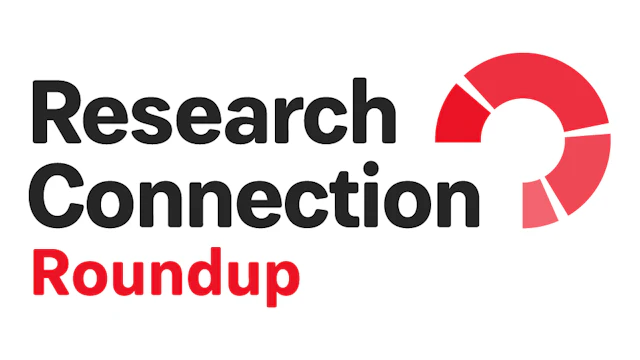The Research Roundup is a regular update of recently published findings in suicide prevention research. AFSP-funded studies included in this roundup examined how…
- Brief Cognitive Behavioral Therapy reduced suicide attempts and psychiatric readmission
- ADHD symptoms relate to suicidal thoughts and behaviors in young children
- Mental imagery and hallucinations are related when it comes to suicidal behavior, and
- Certain regions of the brain may help understand suicidal thoughts and behaviors in individuals with schizophrenia spectrum disorders

Researcher: David Tolin, PhD
Institution: Institute of Living/Hartford Hospital
Grant Type: 2019 Focus Grant – $1,049,024
Grant Title: Inpatient Cognitive-Behavioral Therapy to Reduce Suicide Risk Post-Discharge
Individuals hospitalized for suicidal crises face an elevated risk of suicide, particularly during the months immediately following discharge. Despite the urgent need for effective suicide prevention treatments in inpatient settings, the availability of evidence-based interventions tailored to this population has remained limited. To address this public health challenge, innovative approaches are needed to reduce suicide attempts, suicidal ideation, and psychiatric readmissions. Brief, targeted therapies that can be feasibly implemented during short, inpatient stays may hold promise for improving outcomes and bridging the gap in care after discharge.
In his AFSP-funded focus grant, Dr. David Tolin and his team evaluated the effectiveness of a four-session inpatient version of Brief Cognitive Behavioral Therapy (BCBT-inpatient) compared to treatment as usual (TAU) in a sample of 200 psychiatric inpatients admitted for suicidal thoughts and behaviors. Over a six-month follow-up, BCBT-inpatient reduced the odds of suicide attempts by 60% and lowered psychiatric readmission rates by 71% among participants without substance use disorders (SUDs). However, the intervention's impact on suicidal ideation was less clear, with only modest reductions in ideation severity at one- and two-month follow-ups. Interestingly, participants with SUDs showed the same reduction in suicide attempts, but did not have the same effect on readmissions. These results represent a significant step forward in treating individuals hospitalized for suicidal crises.
Citation: Diefenbach, G. J., Lord, K. A., Stubbing, J., Rudd, M. D., Levy, H. C., Worden, B., Sain, K. S., Bimstein, J. G., Rice, T. B., Everhardt, K., Gueorguieva, R., & Tolin, D. F. (2024). Brief Cognitive Behavioral Therapy for Suicidal Inpatients: A Randomized Clinical Trial. JAMA psychiatry, 81(12), 1177–1186. https://doi.org/10.1001/jamapsychiatry.2024.2349

Researcher: Shira Barzilay, PhD
Institution: Schneider Children’s Medical Center (Israel)
Grant Type: 2021 Young Investigator Grant – $89,950
Grant Title: Multi-Informant Assessment of the Suicide Crisis Syndrome in Adolescents Presenting to an Emergency Department
While ADHD is known to be a risk factor for suicidal thoughts and behaviors in children, the specific role of the symptoms of ADHD (e.g., hyperactivity compared to inattention) remains unclear. Identifying how these symptoms contribute to suicide risk is critical for enhancing clinical assessment and designing targeted interventions, particularly for children referred to emergency departments due to suicidal crises. Addressing this gap can help refine early detection efforts and provide tailored support to those most at risk.
In her AFSP-funded study, Dr. Shira Barzilay and her team investigated the relationship between ADHD symptoms and suicide risk in 71 children aged 7–12 undergoing emergency psychiatric evaluations due to suicidal thoughts and behaviors. Dr. Barzilay found that elevated self-reported hyperactivity was significantly associated with increased rates of suicidal behavior. This association was stronger with lifetime suicide attempts when compared to inattention. Interestingly, children’s self-reports provided more accurate insights into their symptoms than parental accounts, emphasizing the importance of incorporating children’s perspectives in risk assessments. These findings suggest that hyperactivity is a critical target for early intervention and highlight the need for multi-informant approaches to better understand and address suicide risk in this young population.
Citation: Shahnovsky, O., Apter, A., & Barzilay, S. (2024). The Association between Hyperactivity and Suicidal Behavior and Attempts among Children Referred from Emergency Departments. European journal of investigation in health, psychology and education, 14(10), 2616–2627. https://doi.org/10.3390/ejihpe14100172

Researcher: Hannah Lawrence, PhD
Institution: McLean Hospital/Harvard Medical School
Grant Type: 2020 Postdoctoral Fellowship – $112,000
Grant Title: Understanding Suicide Risk in Adolescents: The Unique Role of Imagery
Adolescents experiencing visual hallucinations are at an increased risk for suicidal behavior, yet how these vulnerabilities develop remains insufficiently understood. Suicidal mental imagery, characterized by vivid and distressing internal visualizations of self-harm or death, may play a crucial role in suicide risk among this group. Investigating the relationship between hallucinations and suicidal mental imagery could help uncover mechanisms driving suicidal thoughts and offer opportunities to refine risk assessment and interventions for adolescents hospitalized for psychiatric crises.
Dr. Hannah Lawrence analyzed data from 219 adolescents admitted to a psychiatric inpatient unit for suicidal thoughts and behaviors. Participants were assessed for hallucinations, suicidal verbal thoughts, mental imagery, and past suicide attempts. Dr. Lawrence found that adolescents with recent visual hallucinations had significantly higher rates of suicidal mental imagery and verbal thoughts compared to their peers. Suicidal mental imagery was notably frequent and severe among those with visual hallucinations. However, visual hallucinations alone were not linked to increased suicide attempts. These findings emphasize the need to incorporate assessments of suicidal mental imagery into clinical care for adolescents experiencing visual hallucinations to better address their suicide risk.
Citation: Thompson, E. C., Visser, K., Nail, M., Lawrence, H. R., Hunt, J., & Wolff, J. C. (2025). An Exploration of the Co-Occurrence of Hallucinations and Suicidal Mental Imagery Among Psychiatrically Hospitalised Adolescents at High Risk for Suicide. Early intervention in psychiatry, 19(1), e13626. https://doi.org/10.1111/eip.13626

Researcher: Matthew Hoptman, PhD
Institution: Nathan S. Kline Institute for Psychiatric Research
Grant Type: 2018 Standard Research Grant – $100,000
Grant Title: Neural Correlates of Emotional Regulation in Psychosis with Suicidal Ideation and Behavior
Suicidal thoughts and behavior (STB) are critical public health concerns, particularly in individuals with schizophrenia spectrum disorders (SSD), where the lifetime risk of suicide is elevated. Despite this, the neural mechanisms underlying STB in SSD remain poorly understood, limiting the development of effective interventions. Understanding how emotion-related impulsivity — specifically, negative urgency (NU), or rash actions triggered by distress — intersects with brain activity during emotion regulation could provide insights into targeted approaches to reduce suicide risk in this vulnerable population.
With his AFSP-funded grant, Dr. Matthew Hoptman examined brain activity in 30 individuals with SSD, divided into high- and low-STB groups, using functional MRI during an emotion regulation task. The high-STB group exhibited reduced activation in key regions associated with emotional and cognitive control, including the dorsolateral prefrontal cortex, medial frontal gyrus, and anterior cingulate cortex. These deficits were closely linked to higher levels of NU. The findings suggest that impaired regulation in these neural circuits may play a part in the connection between impulsivity and STB, highlighting the potential for interventions aimed at enhancing emotion regulation and addressing NU to reduce suicide risk in individuals with SSD.
Citation: Hoptman, M. J., Evans, K. T., Parincu, Z., Sparpana, A. M., Sullivan, E. F., Ahmed, A. O., & Iosifescu, D. V. (2024). Emotion-related impulsivity and suicidal ideation and behavior in schizophrenia spectrum disorder: a pilot fMRI study. Frontiers in psychiatry, 15, 1408083. https://doi.org/10.3389/fpsyt.2024.1408083
Learn more about the AFSP research grants featured in this monthly roundup, as well as others, here.
